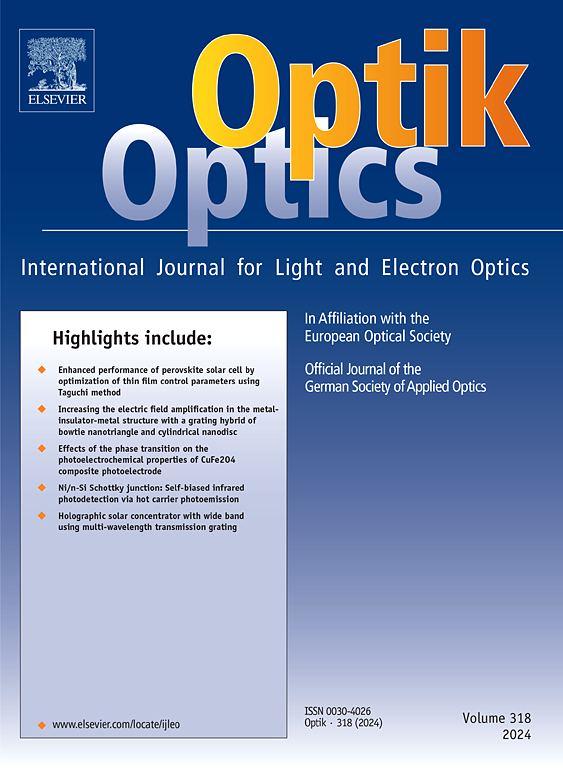复杂Δ原子构型高阶衍射光栅的动态控制
IF 3.1
3区 物理与天体物理
Q2 Engineering
引用次数: 0
摘要
本文介绍了一种利用四能级Δ∇型原子系统通过电致光栅现象将弱探测光衍射到高阶方向的新模型。位置相关的原子场相互作用产生周期性的透射谱,导致全光学光栅产生各种各样的弗劳恩霍夫衍射图样。该方案的关键优势在于M(微波)场和R(射频)场的存在,使得不同跃迁路径之间的量子干涉成为可能。我们正在进行的研究具有重要意义,因为所提出的原子方案提供了对高阶衍射强度的精确控制。我们对振幅光栅、相位光栅和混合光栅的衍射特性进行了全面的研究,重点研究了它们的效率和可调性。由于振幅和相位效应的相互作用,混合光栅的峰值一阶效率达到32.8%,并且对δp, Ω和l敏感。这些结果为高效光学应用中的光栅设计和优化提供了新的见解。此外,值得注意的是,我们提出的系统,在共振时,有显著的能力产生相位光栅。本文章由计算机程序翻译,如有差异,请以英文原文为准。
Dynamic control of high-order diffraction grating in complex Δ∇ atomic configuration
We introduce a new model employing a four-level type atomic system to diffract weak probe light into higher-order directions via the phenomenon of electromagnetically induced grating. The position-dependent atom-field interaction produces a periodic transmission spectrum, resulting in various Fraunhofer diffraction patterns generated by the all-optical grating. The key advantage of this scheme lies in the existence of M (microwave) and R (radio-frequency) fields, which enable quantum interference among different transition pathways. Our ongoing research holds substantial significance as the proposed atomic-scheme offers precise control over higher-order diffraction intensities. We present a comprehensive study of the diffraction properties of amplitude, phase, and hybrid gratings, focusing on their efficiency and tunability. Hybrid gratings, resulting from the interplay of amplitude and phase effects, achieve a peak first-order efficiency of 32.8% and exhibit sensitivity to , , and L. These results provide new insights into the design and optimization of gratings for high-efficiency optical applications. Additionally, it is noteworthy that our proposed system, at resonance, has the remarkable capacity to generate a phase grating.
求助全文
通过发布文献求助,成功后即可免费获取论文全文。
去求助
来源期刊

Optik
物理-光学
CiteScore
6.90
自引率
12.90%
发文量
1471
审稿时长
46 days
期刊介绍:
Optik publishes articles on all subjects related to light and electron optics and offers a survey on the state of research and technical development within the following fields:
Optics:
-Optics design, geometrical and beam optics, wave optics-
Optical and micro-optical components, diffractive optics, devices and systems-
Photoelectric and optoelectronic devices-
Optical properties of materials, nonlinear optics, wave propagation and transmission in homogeneous and inhomogeneous materials-
Information optics, image formation and processing, holographic techniques, microscopes and spectrometer techniques, and image analysis-
Optical testing and measuring techniques-
Optical communication and computing-
Physiological optics-
As well as other related topics.
 求助内容:
求助内容: 应助结果提醒方式:
应助结果提醒方式:


